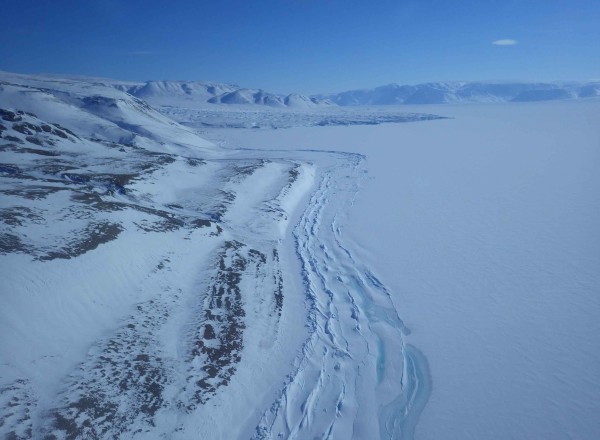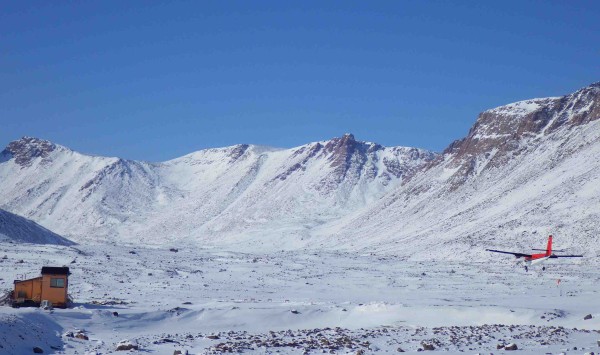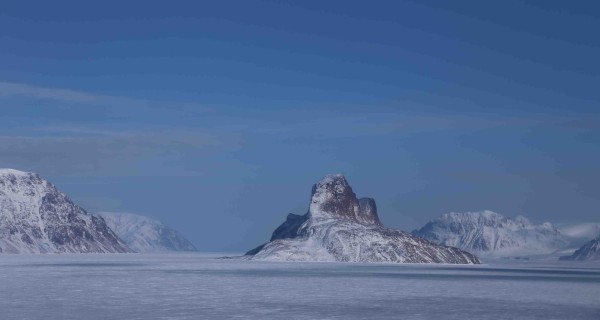Polar bears of the Last Ice Area: The Weather is Our Boss
Written by Vicki Sahanatien, Senior Officer, Government & Community Relations, Arctic Program
In the spring, I spent a few weeks in Kane Basin, high in the Arctic, in the region we call the Last Ice Area. I was there as part of a research term, in the area to learn more about the polar bears that call this area home, and the sea ice that is their habitat. As the Arctic warms and the ice retreats, we expect this to be a critical area for ice-dependent species like the polar bear, making it essential that we better understand the region and its current inhabitants.
When it comes to Arctic field research, weather is a major factor. The boss of the project. The majority of field research in the Arctic relies heavily on aircraft support – no surprise in a vast place with few roads. Twin otters and helicopters bring fuel, equipment, supplies and people to the scattered tent camps and cabins that serve as home bases for the field season. Depending on the nature of the field work, a helicopter may stay with the research team or not. Polar bear studies usually require a helicopter, so weather conditions played a big role in our work.

All Arctic researchers take ‘weather days’ into account when planning the field schedule. Weather affects our ability to complete the work and the cost of a project – every extra day comes with extra costs. In the Canadian high Arctic most researchers ‘stage’ – prepare for their trip – out of Polar Continental Shelf Project logistical facility in Resolute Bay. You arrive by commercial airline, check all gear, and then wait for a weather window to be deployed. We took a second commercial flight to Grise Fiord to meet the helicopter, as it was already there working on a Peary caribou project. Grise Fiord has a short landing strip that is surrounding on three sides by mountains, so wind conditions limit access.

We arrived in Grise Fiord on April 24, as scheduled. Off to a good start! Our helicopter pilot and engineer weren’t as lucky and arrived on April 27, one day late, as there was blowing snow on the planned arrival date. See what I mean by weather dictating our schedule?
Day 1 of the polar bear survey was April 28. We flew north to Makinson Inlet and put in a good long day, getting everyone into the routine with the survey methods. The next day the team went out but got blocked by high winds and blowing snow. The following day it was a no go. The next day, we were able to get out and survey for about half the day before conditions deteriorated. Then another down day. It was time to move the team to the field camp at Alexandra Fiord. On the May 3 there was a weather window that the helicopter could work in, but the twin otter could not. So the helicopter left with supplies to last a few days until the twin otter could catch up.

Finally on May 5, everyone and everything was assembled together. We were then able to fly the survey all but three days between May 5 and May 13. Then we had to wait for good weather further south before we could depart – it took another six days before conditions at our site and in Grise Fiord and Resolute cooperated, and we were able to travel the 1,000km south.
What happens while we wait on weather? We read, do camp chores, check equipment, enter data, write, go outside for air, melt ice and snow for water, nap. We talk about bears, Arctic experiences and home, and we store up energy for the work to come. When the work resumes we are on the go for 14-16 hours a day.
What was the tally for this study? 26 days in the field to complete 10 days of survey; not unusual for an aerial polar bear survey – and certainly worth the time for useful research data.

